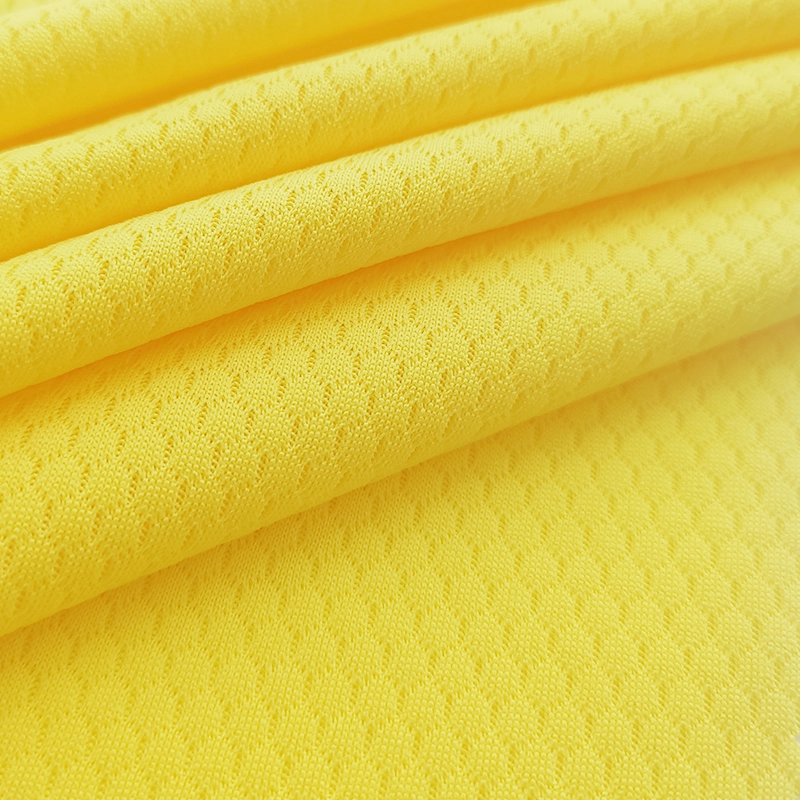Cooling fabrics achieve thermal regulation through moisture-wicking, radiation, and evaporation. Advanced materials like PP/POE@ZnO microfibers use porous structures to reflect >90% solar radiation and emit heat via infrared, enabling daytime radiative cooling. CoolMax employs micro-grooved fibers to rapidly wick sweat, enhancing evaporative cooling (5× faster drying than cotton). Hybrid designs integrate phase-change materials (e.g., graphene) or bio-based membranes for dynamic heat absorption. Breathable, waterproof layers (e.g., 2.5-layer laminates) balance airflow and durability. Sustainable innovations include fluorine-free DWR coatings and recycled polymers. Certifications like OEKO-TEX® ensure safety and performance. Ideal for sportswear and outdoor gear.
Radiative Cooling:
Fabrics like POM nanofibers reflect >96% of solar radiation while emitting infrared heat through atmospheric transparency windows (8–13 μm), achieving sub-ambient cooling even in direct sunlight . Bioinspired coatings with CaCO₃/BaSO₄ microcrystals amplify solar reflection and infrared emission, reducing temperatures by up to 8°C compared to untreated fabrics .
Phase-Change Materials (PCMs):
Hybrid designs integrate graphene or wax-based PCMs to absorb and release heat dynamically, stabilizing skin temperature during temperature fluctuations .
Radiative Cooling:
Fabrics like POM nanofibers reflect >96% of solar radiation while emitting infrared heat through atmospheric transparency windows (8–13 μm), achieving sub-ambient cooling even in direct sunlight . Bioinspired coatings with CaCO₃/BaSO₄ microcrystals amplify solar reflection and infrared emission, reducing temperatures by up to 8°C compared to untreated fabrics .
Phase-Change Materials (PCMs):
Hybrid designs integrate graphene or wax-based PCMs to absorb and release heat dynamically, stabilizing skin temperature during temperature fluctuations .
Microporous Structures:
Fabrics like CoolMax use grooved microfibers to wick sweat 5× faster than cotton, accelerating evaporation and preventing moisture buildup .
Asymmetric Fiber Designs:
Bamboo yarn or polyester blends create directional moisture transport, moving sweat away from the skin to the fabric’s outer surface for rapid drying (e.g., meta-fabrics with bamboo-silicone layers) .
Loose-Fit Designs:
Black, loose-fitting fabrics (e.g., Bedouin robes) create a "chimney effect," where heated air between the fabric and skin rises, promoting airflow and cooling—proven to match or outperform white tight-fitting alternatives .
Textured Fabrics:
Seersucker or piqué weaves lift fabric away from the skin, reducing contact and enhancing airflow .
Natural Fibers:
Linen and cotton allow unrestricted airflow and absorb moisture without trapping heat, ideal for dry climates . Bamboo-PU blends add antimicrobial properties while maintaining breathability .
Eco-Friendly Treatments:
Fluorine-free DWR (Durable Water Repellent) coatings and recycled polymers (e.g., TPU) reduce environmental impact without compromising cooling performance .
Fabrics meeting OEKO-TEX® or Bluesign® standards ensure chemical safety and thermal efficiency, critical for prolonged wear in extreme conditions

Reflect sunlight & emit heat via infrared.
Enable dynamic temperature regulation.
Hydrophobic/hydrophilic yarns prevent sweat adhesion.
PP/POE@ZnO fabrics for outdoor workwear.
Breathable designs for extreme heat.
Fluorinated resins enhance cooling durability.
PFAS-free with cooling nanoparticles.
These innovations blend advanced materials and sustainable tech for performance-driven apparel. For details, refer to cited sources.